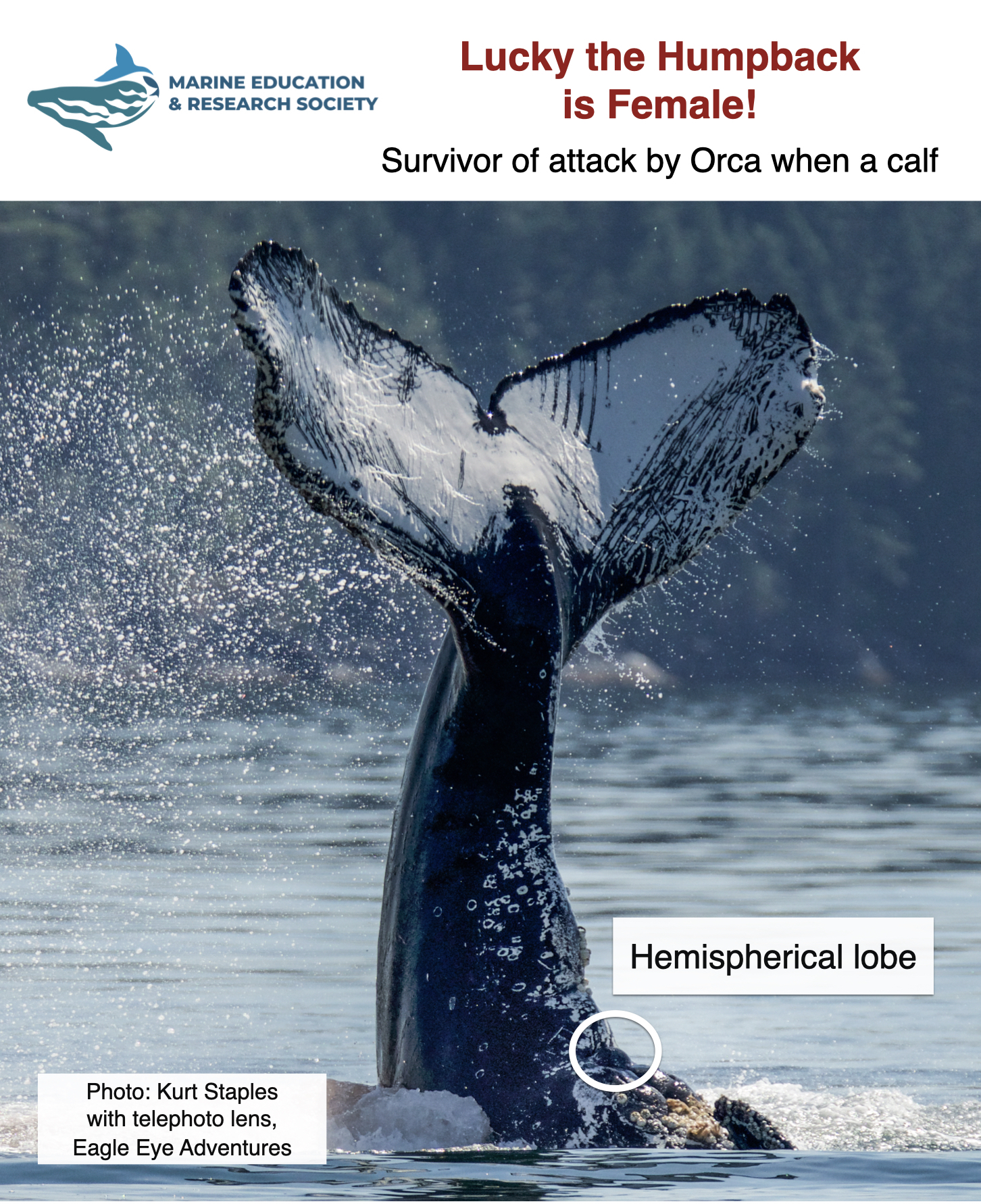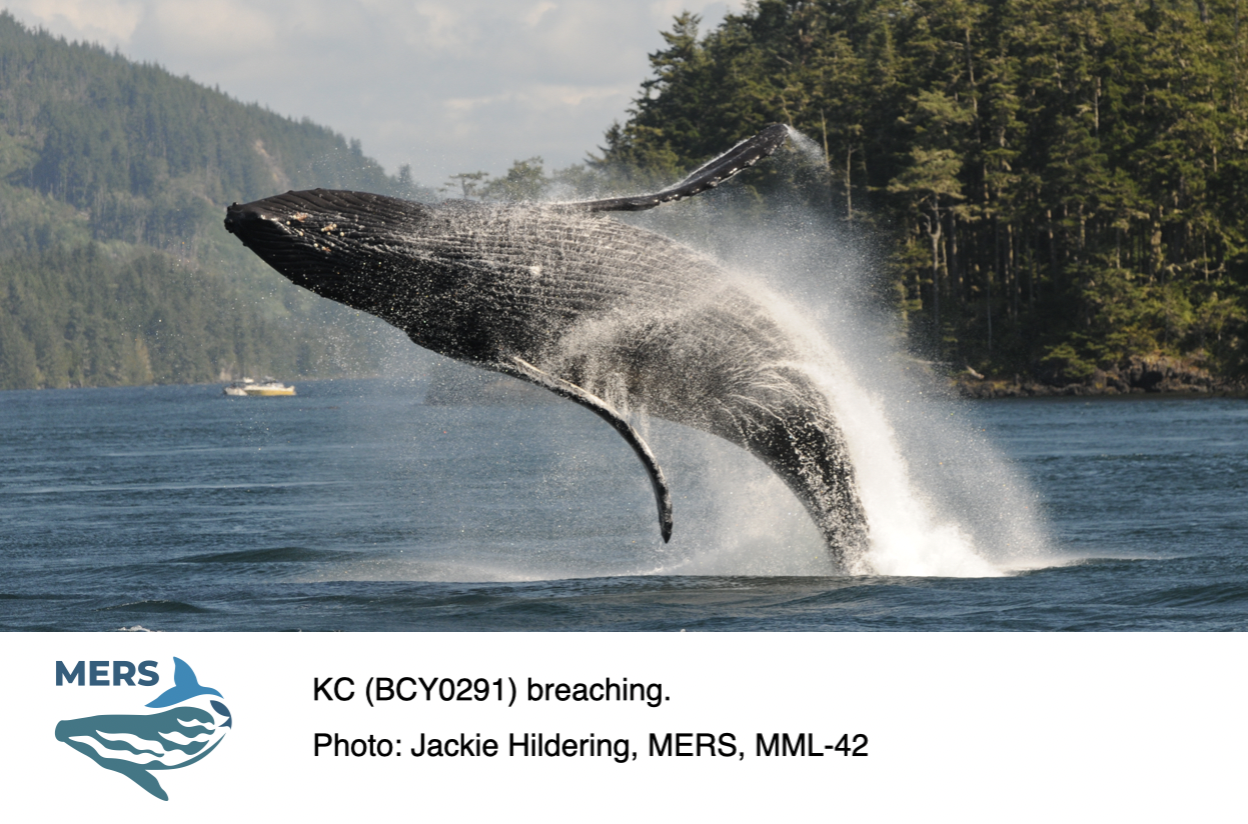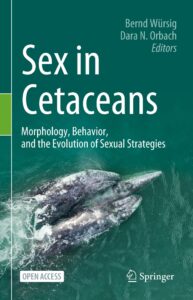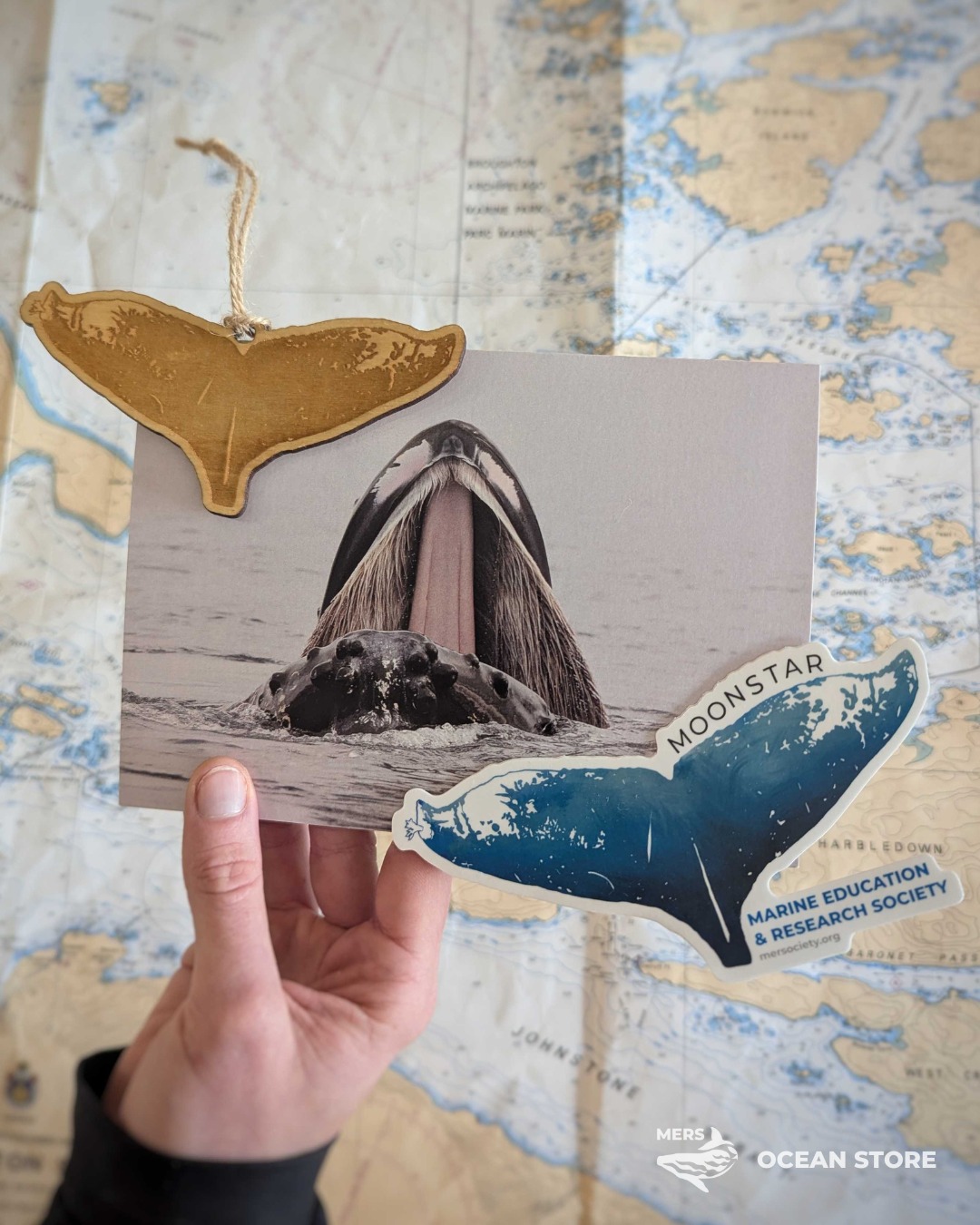Here’s another story of a survivor. It’s an update that will likely be of great interest as Lucky is one of the most easily identifiable Humpbacks in our study area.
The latest that we can confirm, thanks to the photo below from Kurt Staples, is that Lucky is female. Lucky’s catalogue designation is BCZ0419.
 But before we explain that, let us give you some of her backstory.
But before we explain that, let us give you some of her backstory.
Lucky? One thing that clearly makes her so easy to identify is the scarring on her tail. In this case, her misshapen tail with all scars is not the result of entanglement or vessel strike. Lucky is the survivor of an attack by Killer Whales / Orca. This attack happened well before she was first documented in 2012.

How do we know that? Because the spacing between the rake marks is wider than than the spaces between Killer Whales’ teeth i.e. the scars grew further apart as Lucky’s tail grew. Note that there has never been a confirmed case of Bigg’s Killer Whales (mammal-eating population) killing a larger Humpback but Lucky, who was attacked as a calf, is . . . lucky to be alive.
This very fitting nickname was put forward by Leah Robinson of OrcaLab who was the first to document Lucky back on November 14th, 2012.
The other thing that makes Lucky more easy to ID as an individual is that she is the Humpback Whale in our study area that almost exclusively solo bubble-net feeds, using a net of bubbles to coral juvenile herring. For clarity: she is not the only one that uses this feeding strategy in the area but she IS the one that appears to do so almost exclusively.
The other Humpback Whales primarily lunge-feed (with some individuals also occasionally trap-feeding and/or solo bubble net-feeding). Note that Humpbacks on other parts of our coast (British Columbia’s central coast, north to Alaska) are specialists in bubble-net feeding as a team but this is not a good strategy in an area with a lot of current since the bubbles will not remain intact. .
Since 2012, Lucky has very predictably been seen solo bubble-net feeding around NE Vancouver Island in back-eddies or on slack tide i.e. where/when the bubbles cannot be blasted away by current. In more recent years, she has more often been sighted further to the south near Campbell River.

This is why we get very excited when Humpbacks lie on their backs and “tail-lob”. THEN, if the whale’s tail is far enough out of the water, the pelvic area is visible.
The females have a small feature known as the “hemispherical lobe”. Males do not. See below (click image to enlarge).

In this story about Lucky, you’ll note again how the knowledge we have about a whale is so often the result of a community of data contributors. We can put the pieces of the puzzle together but could not do it without this community and the further support of many. Thank you.
For more information, see the free, online book “Sex in Cetaceans – Morphology, Behavior, and the Evolution of Sexual Strategies” (2023)



